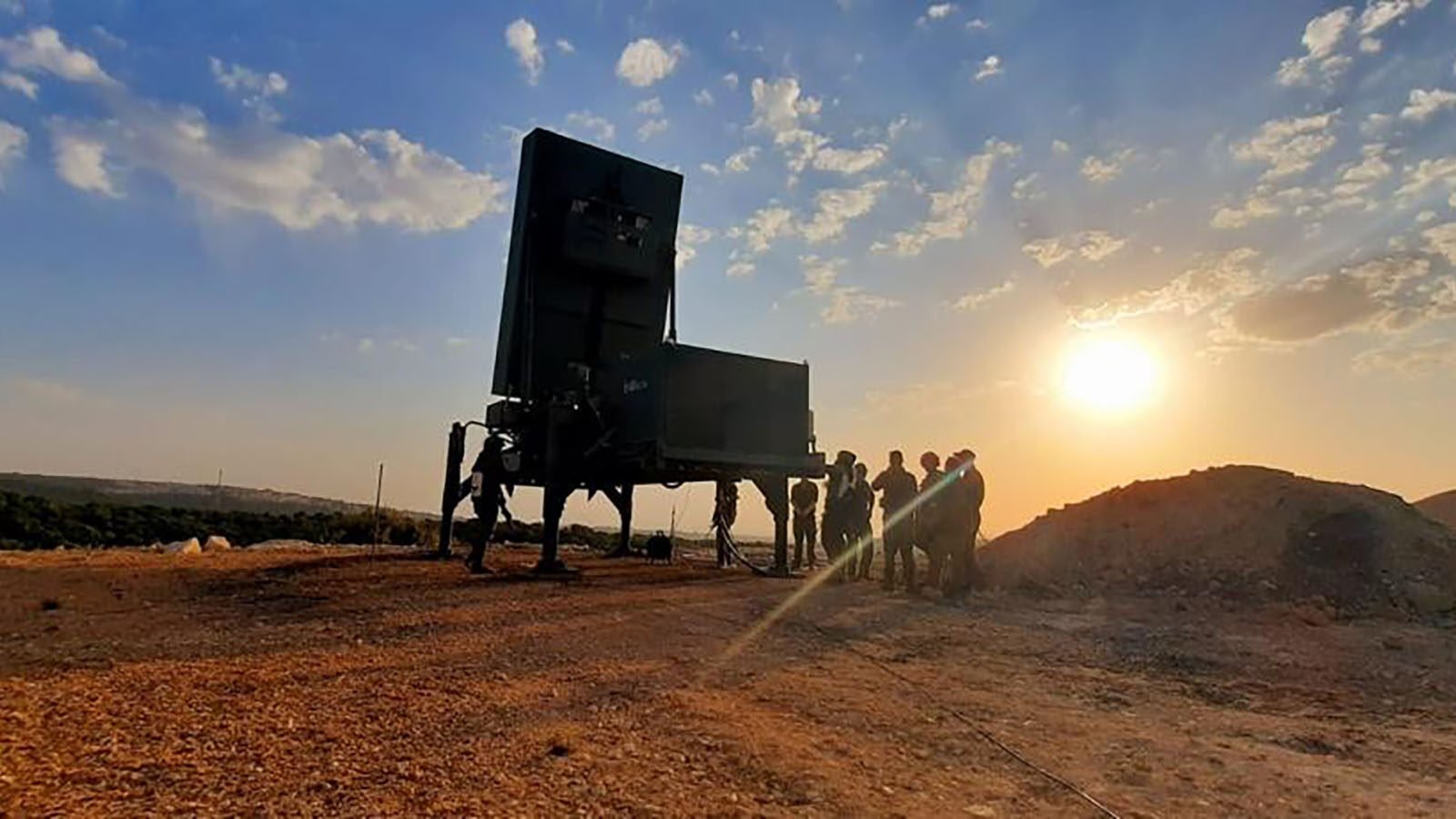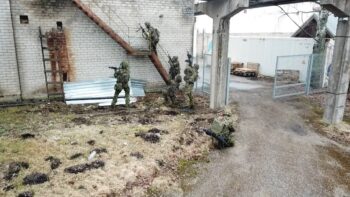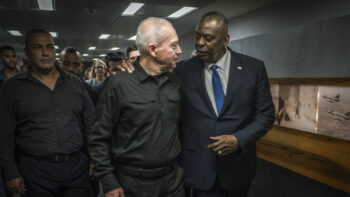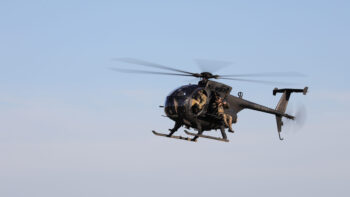
Members of the IDF’s Unit 611 stand near a radar at their base in northern Israel. (IDF)
JERUSALEM — When rockets are launched towards Israel, a variety of military radars trace the incoming munition either to help intercept it or to predict where it might land. But one specialized unit in the Israeli Defense Force (IDF) is tasked with a different job: seeing where the rocket was fired from and quickly getting that information to other Israeli units that can respond, perhaps with lethal force.
“My unit detects where the missile launch is from. We know how to defeat the enemy, doing that in the most best way possible, without collateral damage. We detect the LP (launch point) while other radars may also focus on the IP (Impact point), ” Lt. Col. B, the commander of Israel’s 611 ‘Eagle’ Battalion, told Breaking Defense in a rare interview recently at the unit’s base in northern Israel. His full name cannot be provided for security reasons, the IDF said.
The Israeli officer discussed his unit’s unique role from an office, where outside the heat was sweltering. This area overlooks the Golan Heights and the Sea of Galilee, a strategic triangle of landscape during Israel’s War of Independence, though the base has a relaxed atmosphere to it. Tall and limber, Lt. Col. B speaks fluently in English and is passionate and proud of his unit, eager to show off commendations the unit has received. He’s excited by the role of artillery in warfare and how Israel uses the latest technology to confront emerging threats.
RELATED: Israel says US has given green light to send David’s Sling to Finland
Driving into the base where the 611 is located the sense of the unit’s history can be felt from a coterie of older artillery pieces and radars that line the entrance, along with a plaque commemorating fallen members of the brigade. But the role of the 611, a ground forces unit within the 282nd fire brigade, is a critical one on the more modern battlefield, in which key data — for example a rocket’s launch point — must be assessed and urgently passed through the IDF’s network to the right commanders for immediate action. It’s a microcosm of the kind of sensor-to-shooter loop that the American Pentagon is spending billions to achieve through its Joint All Domain Command and Control initiative.
“We are multi-branch,” the commander said. “Everyone is talking about being networked, but who really does it is my unit. This is multi-domain and multi-arms [combined arms] working with the air force to see anything that flies or [everything that] is on the ground.”
The 282nd artillery brigade of which the 611 is part is located at Camp Yiftach, near the Sea of Galilee. It’s has been known as a “fire” unit since 2017 and is nicknamed the Golan Formation. It is part of the IDF’s Northern Command, which includes the Golani infantry brigade, the 7th Armored and 188th Armored. The north has been a particular focus for Israel forces in recent months due to tensions with the Iran-backed, Lebanese militant group Hezbollah. Much has changed since Israel last fought a major conflict with Hezbollah in 2006, and in the wake of the Syrian civil war and Iran’s threats, the main discussion in Israel often revolved around facing multi-front threats and conflicts.
The commander said his unit has been “connect[ed]” to “every operation” recently, from Breaking Dawn in August 2022 to Shield and Arrow in May. During the fighting in Gaza in May, the commander said his unit aided with 26 counterstrikes against rocket launch sites in Gaza and 14 mortar sites. It also assisted with 345 sirens that are used to warn Israeli civilians on the home front to enter shelters. “We use one of best radars in the world and can classify… [threats] from drones to airplanes, missiles, etc.” (That fighting alarmed the United Nations, which reported 10 Palestinian civilians had been killed in an “exchange of airstrikes” between Palestinian militants and Israeli forces.)
The radar the 611 uses is similar to the Multi-Mission Radars operated by the air force and are used in the famed Iron Dome air defense system, the commander said. But it’s also always adapting to the modern fight.
“The enemy can switch drones, missiles or the way they launch them, and the battle of learning is always out there and we try to be two steps ahead,” he said.
Israel has been preparing for the possibility of a multi-front war for the last several years, should tensions with Iran, especially, escalate. LT. Col. B said his unit is ready for eventuality, to be able to be networked with units in a variety of sectors at Israel’s borders. What this mean for the 611 is being able to speak directly with other units at various levels, such as battalion, brigade and higher up.
“Today we see all the units together,” he said. “We can see them together and information flows, but every person has their specialty. I am the only one [unit] that can translate what we are seeing to detect, defend and destroy.”






















